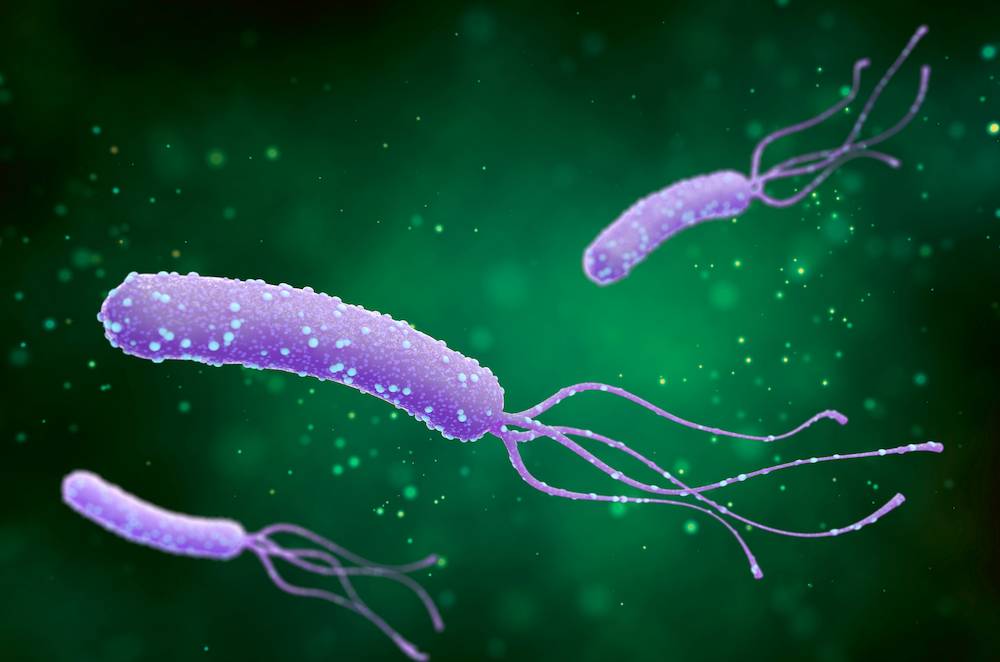

Helicobacter pylori: Dissolves The Stomach’s Lining
Helicobacter pylori was known to be a commensal helical-shaped bacterium with flagella, a tail-like structure living inside the gut. Barry James Marshall, a physician, accidentally discovered that the real cause of gastric and duodenal ulcers was H. pylori. He also designed a diagnostic method called the breath test to detect H. pylori infection.
The bacterium resides in the stomach, and once the number starts increasing, it can survive in highly acidic conditions hence, hampering the acid levels in the stomach. Mostly the infection occurs in early childhood and is known to remain silent for years. H. pylori secretes the acid that liquefies mucus, allowing the pathogen to drill up to the gut lining and reside there. The attack on your stomach causes redness and swelling. It can cause open sores called peptic ulcers in your upper digestive tract. Many people with the bacterium don’t show any symptoms. People with H. pylori infection also have a higher risk of stomach and colorectal cancer.
H. pylori can be passed or spread from person to person by mouth, such as by kissing and feeding chewed foods to children. It may also pass by direct contact with vomit or stool. Drinking unfiltered/unboiled water in urban areas, and tobacco and meat consumption are risk factors for developing infection. You can prevent the infection by washing your hands with soap and water, especially after going to the bathroom and before eating meals, consuming clean and cooked food, and drinking safe and clean water. Having good and healthy habits can protect you from tons of infections.
The stool looks normal for an individual suffering from H. pylori but, it looks dark, black, and tarry, or blood in it due to stomach ulcers contact the doctor. The bacterium can only be detected if it gets shed in the stool. The stool tests are done by detecting antigens and PCR to look for antibiotic-resistant mutations. Doctors prescribe triple antibiotic therapy as the first-line treatment. If there’s not enough improvement quadruple therapy is prescribed. The bacterium can also develop antibiotic resistance which can be understood by testing the stool. The overall gut microbiome can be tested to understand the impact of antibiotics and dysbiosis and implement strategies to rebuild a healthy gut.
Prevention is better than cure!
Reference
Helicobacter pylori the Latent Human Pathogen or an Ancestral Commensal Organism
Association of Helicobacter pylori Infection With Colon Cancer and Adenomatous Polyps

